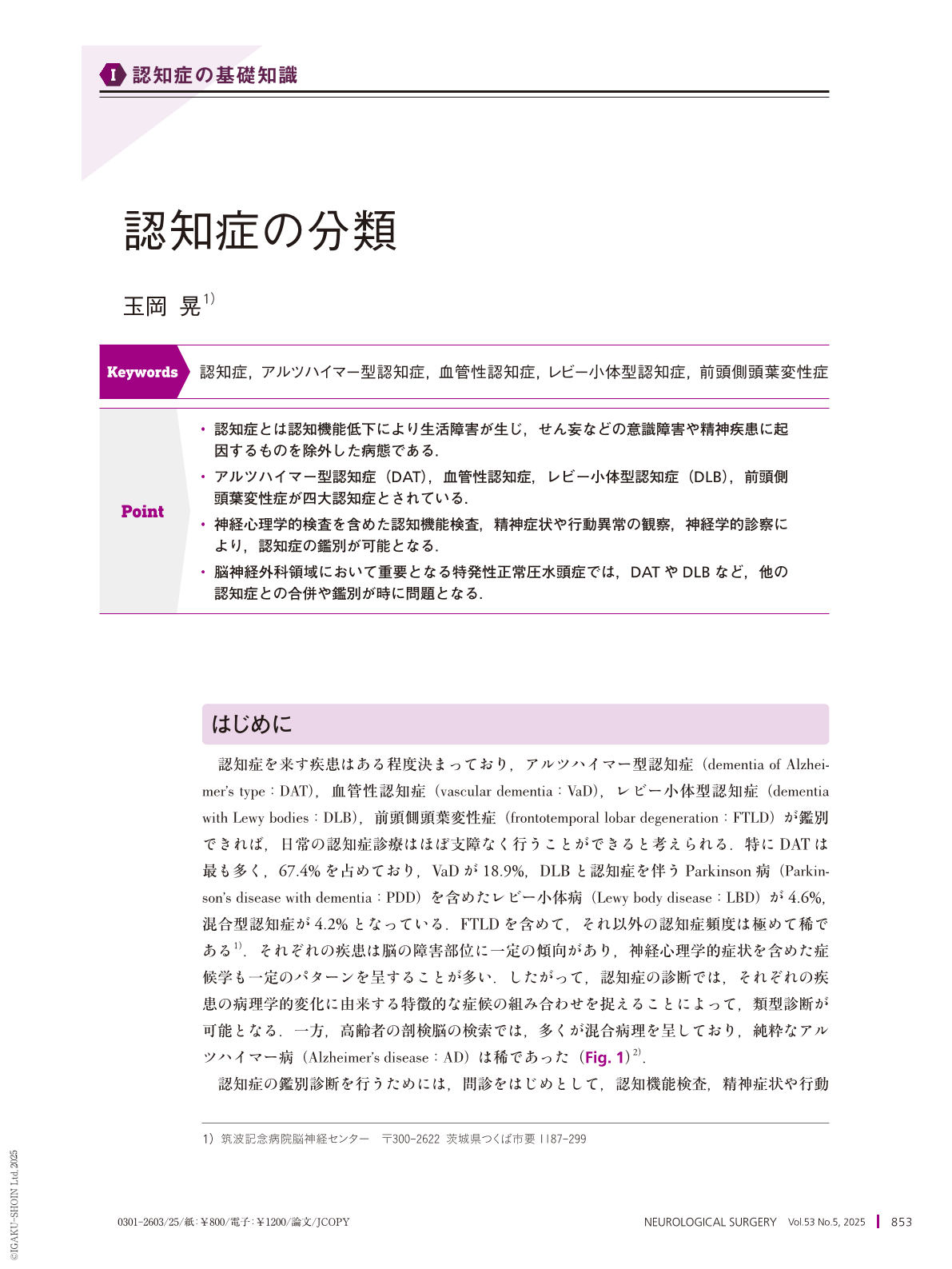Japanese
English
- 有料閲覧
- Abstract 文献概要
- 1ページ目 Look Inside
- 参考文献 Reference
Point
・認知症とは認知機能低下により生活障害が生じ,せん妄などの意識障害や精神疾患に起因するものを除外した病態である.
・アルツハイマー型認知症(DAT),血管性認知症,レビー小体型認知症(DLB),前頭側頭葉変性症が四大認知症とされている.
・神経心理学的検査を含めた認知機能検査,精神症状や行動異常の観察,神経学的診察により,認知症の鑑別が可能となる.
・脳神経外科領域において重要となる特発性正常圧水頭症では,DATやDLBなど,他の認知症との合併や鑑別が時に問題となる.
Community-based surveys conducted in Japan investigating the prevalence of dementia and its underlying causes revealed that dementia of Alzheimer's type (DAT) is the most common, followed by vascular dementia (VaD), dementia with Lewy bodies (DLB), mixed dementia, and other conditions including frontotemporal lobar degeneration (FTLD). Accurate differential diagnosis of these disorders requires clarification of their clinical characteristics.
The initial symptoms of DAT typically include recent memory loss, episodic memory impairment, and temporal disorientation. Behavioral and psychological symptoms often observed in DAT include delusions of theft, “saving appearance” responses, and head-turning signs.
Vascular dementia develops in association with cerebrovascular disease and frequently exhibits a stepwise progression. DLB is characterized by core clinical features such as cognitive fluctuations, visual hallucinations, parkinsonism, and REM sleep behavior disorder. Diagnostic tools such as 123Iodine-metaiodobenzylguanidine (MIBG) myocardial scintigraphy and dopamine transporter (DAT) imaging may aid in diagnosis.
In Parkinson's disease with dementia (PDD), cognitive impairment appears more than one year after the onset of parkinsonism. FTLD involves degeneration of the frontal and temporal lobes, leading to prominent changes in personality, behavior, and language function. Several subtypes of FTLD exist depending on the affected brain region, including the behavioral variant of frontotemporal dementia, semantic dementia, and progressive non-fluent aphasia.
Idiopathic normal-pressure hydrocephalus (iNPH) is characterized by gait disturbance, urinary incontinence, and dementia, resulting from an abnormal accumulation of cerebrospinal fluid. Pathologically confirmed cases of DLB and progressive supranuclear palsy (PSP) may occasionally present with symptoms resembling iNPH.

Copyright © 2025, Igaku-Shoin Ltd. All rights reserved.


